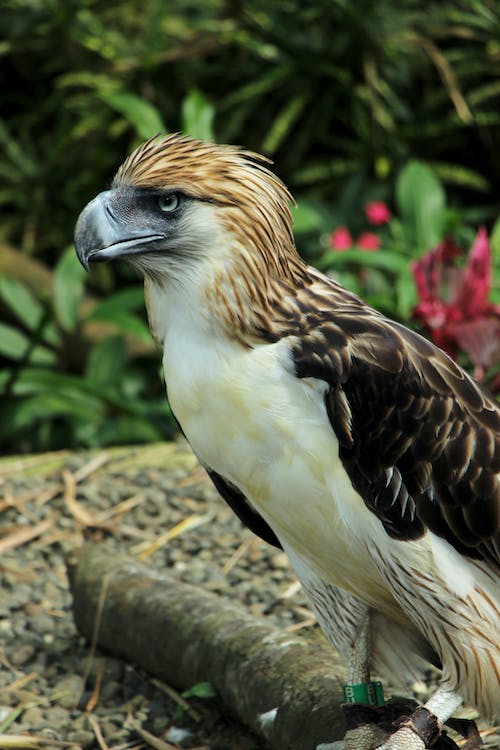It is a large, bulky, darkish eagle, with a tall, flabby crest. This bird thrives in plantations, farmlands, woodlands, orchards, open forest, and forest edges. Prefers perching for extended periods but once in a while, soars. A prolonged, booming “kweeeeeyaa” characterizes its call.
Read further to know more about the Long-crested Eagle.
What is a Long-crested Eagle?
Long-crested Eagle (Lophaetus occipitalis) is a bird of prey belonging to the Accipitridae family of eagles. It is one of the smaller of its cousins, recognizable through its distinctive crest and white patches on its wings when in flight. This bird goes back to its regular perches, in their chosen habitats, swooping down to catch rodents and vlei rats once detected.
Its seven levels of classification are as follows:
Kingdom: Animalia
Phylum: Chordata
Class: Aves
Order: Accipitriformes
Family: Accipitridae
Genus: Lophaetus
Species: L. occipitalis
Long-crested Eagle Physical Description
Long-Crested Eagles have an entirely dark brown to blackish appearance, with exceptions for the white marking at their primary feathers’ base, and grayish-barred tail with white edges. They have a distinctive, long, flabby crest at the rear of their crown, in which they got their name. Eyes are bright yellow but may appear darker in females. Feet and cere are yellow but duller to whitish in males. Juveniles or immature birds look like adults, but sport a paler plumage, while crest is yet to develop. They are one of the smaller eagles, growing from 21 to 23 inches or 53 to 58 centimeters and weighing 912 to 1500 grams. Females are relatively larger and heavier.
Where can they be spotted?
Long-crested Eagles are found across sub-Saharan Africa, such as in Botswana, Ethiopia, Namibia, South Africa, Mozambique, Senegal, and Zimbabwe. These birds thrive in moist woodlands, forest edges, marshes, farmlands, woodlands, pastures, plantations, and orchards. They avoid arid areas,
Interesting Facts You Should Know About the Long-crested Eagle
Long-crested Eagles feed almost mainly on rodents, which is believed to take about 90% of their diet, making them beneficial to farmers. Other food items they consume include fish, lizards, arthropods, and small birds. Occasionally, they also eat mulberries and wild figs. They hunt from a perch, keenly observing their prey, and then swoops down to catch them once detected. These birds have a wide gape, and swallow their prey whole.
They are monogamous birds, and courtship displays are characterized by rocking flights, steep dives, and calling. Breeding season occurs throughout the year but is generally linked to the population of rodents and, in turn, rainfall. Egg-laying season peaks from July to November.
Both sexes construct the nest, which is a cup made of sticks, with green leaves interior. They build the on tree trunks found in the middle canopy. The most common trees used are Acacia, Eucalyptus, Musasa, Willow, and Fig.
The female long-crested eagles will lay 1 to 2 eggs, which she will solely incubate for 42 days, while the male hunts and provides her food. Chicks hatch 15 days apart, which will also be fed by the male initially. After 53 days, the chicks will fledge before leaving parental care 2 to 3 months later.
Long-crested Eagles do not face much persecution as they are deemed beneficial by farmers in controlling the rodent population. However, their number is in threat due to the destruction of habitats and collisions with vehicles and power lines. Still, the species does not reach decline thresholds, and they are evaluated as Least Concern (LC) under the IUCN Red List.
WILDLIFE PARKS AND RESERVES WHERE THIS SPECIES IS FOUND:
BOTSWANA
SOUTH AFRICA
Kalahari Gemsbok National Park
NAMIBIA
ZAMBIA
ZIMBABWE
BOTSWANA BIRDS | SOUTH AFRICA BIRDS
NAMIBIA BIRDS | ZAMBIA BIRDS | ZIMBABWE BIRDS

